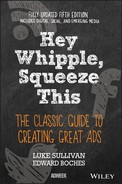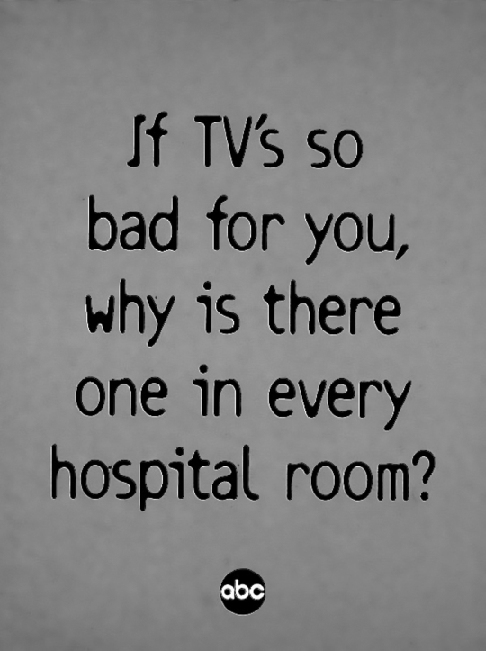
Figure 16.1 This whole campaign from Chiat/Day was great. A bright yellow background made the posters and outdoor pop beautifully.
16
In the Future, Everyone Will Be Famous for 30 Seconds
Some Advice on Telling Stories Visually
Somewhere in America is the nation's worst dentist. He's out there somewhere.
We don't know where he is, but he's out there right now, probably sticking a novocaine needle in somebody's nose or putting a silver filling in his patient's dentures. He is the single worst dentist in the entire country.
And here's the thing: no one knows who he is.
Yep, the worst dentist in all of America, and he does his horrible work in anonymity. You don't hear people gathered in the company kitchen going: “Oh, man, did you see that piece-of-crap bridgework Dr. Hansen did last week? Teeth made outta old paperback books and Bubble Yum? Guy's a complete idiot.”
On the other hand, where is the worst commercial in all of America?
It's right there on national TV, playing night after night.
Unlike the anonymity the worst dentist enjoys, here in the ad industry our failures are very public. The worst commercials from the worst agencies (and the worst clients) are all right up there on the big screen in all their digital horror, seen by tens of millions every night. And people do talk about them at the office.
Here's my point: You don't want to suck in this business of advertising, and you really don't want to suck at TV. Even your mom's gonna see it. As hot as digital has become these days—and we've devoted six chapters to it in this edition—television is still a very big dog. Yes, YouTube is cool, and so are Hulu and all the other online video platforms. But if you want a mass audience, broadcast TV is the thing.
Many of the suggestions from the chapters on general concepting apply to this medium, the virtues of storytelling and simplicity being perhaps the most important. The skills you develop learning to concept and write for TV should also help you create pretty much any kind of video content, whether it's for online videos or an in-store display. Here are a few things I've learned from my colleagues along the way.
Creating the Commercial
Rule #1 in Producing a Great TV Commercial: First, You Must Write One
The creative's job on a TV spot doesn't end with coming up with the idea. That's just the beginning of a long process—a process the creative team will play a part in all along the way. Sell a so-so print or outdoor campaign and at least you'll have it out of your hair relatively quickly. A so-so TV spot will haunt you for weeks or months. You'll have the same long casting sessions you would producing a great spot, the same boring hours on the set during prelighting, and the same tepid coffee in the editing suites. But when you're done, you'll have a ho-hum commercial.
Put in the hours now, during the creative process. Make the concept great. Otherwise, you will have a long time to wish you did.
Make Sure You Know Up Front What Kind of Money is Available for Your Project
It's no fun to waste time coming up with a great campaign the client can't afford. So ask your account people to provide a real production estimate. Don't let them tell you the client doesn't really know. That's like walking into a Tesla dealership and telling the salesperson you don't really know how much you have to spend. (“I might have $100,000, I might not. I don't really know.”)
Typically, production estimates are 10 percent of the total TV buy. Getting this figure is sometimes difficult, but somebody somewhere at the client has a dollar amount in their head, and it's best you find out what it is now.
Remember, just because you can think it up doesn't mean you can shoot it.
Before you get too excited about selling an idea, make sure your idea can be executed within your budget. Even the simplest effects can be surprisingly expensive, and some are hard to pull off regardless of the money available.
Study the Reels
There's nothing like seeing a great commercial on a screen. They just don't make the transition to the printed page very well. (That's why I've included only a few stills from favorite spots in this book.) You need to see the actual work.
Most of the commercials mentioned in this book are viewable online somewhere. With a few prudently chosen search words, you should be able to see all the spots (and the websites) that are covered here. A few of my faves are on bit.ly/whipple5.
Solve the Problem Visually
TV is a visual medium, and it begs for visual solutions. Me? I happen to prefer visual over verbal approaches in any medium. I'm not the only one. There's a whole school of thought that says: “Don't talk at customers. Tell them a story with pictures. Start with images. Stay with images.”
I've also heard the saying: “The eye will remember what the ear will forget.” Which kinda makes sense. I mean, remember the last time you tried to tell somebody about a great commercial? Did you recite the script? Or paint a picture?
Still, on the other hand, words can rock the commercial casbah.
Just when you think the sun rises and sets on eye candy and visual storytelling, along comes Wieden+Kennedy with a spot like the one for Chrysler. It premiered on Super Bowl XLV and blew everybody away—with words. It was called “Imported from Detroit,” and the copy was the coolest part. whipple5Detroit
(Against a long montage of sometimes beautiful, sometimes blighted Detroit, we hear a male voice-over.)
MALE VO: I got a question for you. What does this city know about luxury? Huh? What does a town that's been to hell and back know about the finer things in life? I'll tell ya…more than most. You see, it's the hottest fires that make the hardest steel. Add hard work, conviction, and the know-how that runs generations deep in every last one of us. That's who we are. That's our story. Now it's probably not the one you've been readin' in the papers. The one being written by folks who have never even been here 'n' don't know what we're capable of. Because when it comes to luxury, it's as much about where it's from as who it's for. Now we're from America, but this isn't New York City. Or the Windy City. Or Sin City. And we're certainly no one's Emerald City. [Motown rapper, Eminem, to camera:] This is the Motor City. And this is what we do. [SUPER: The Chrysler 200 has arrived. Imported from Detroit.]
Can You Make the Picture Do All the Work?
Let your TV concept be so visually powerful a viewer would get it with the sound turned off. In the living room where your spot airs, the sound may very well be turned down, and since so many TV spots now also run online (where the sound is probably turned off), it's not a bad idea to have your idea work visually. This isn't a rule; it doesn't always work. But when it does, it's great. It means you have a simple idea.
One of my favorite all-visual commercials was done for the Sussex Safer Roads Partnership in the UK. It visually demonstrates why wearing a seat belt is important to both driver and family and does it without showing seat belts or even cars. Shot in gorgeous slow motion, we see a man sitting in his living room pretending to drive as his loving family looks on. When the man's face shows us he's about to be in a bad accident, his wife and daughter rush to wrap their arms around him—one set of arms across his chest like a shoulder belt, the other across his waist. The spot is already great up to this point but then it blows your mind when the quiet living room environment explodes as if it is itself a moving vehicle in an accident (Figure 16.2). The super comes up: “Embrace Life. Always wear your seat belt.”

Figure 16.2 Go online and look at this spot right now. I'll wait here. whipple5seatbelt
The video exploded online as well with a million views in its first two weeks on YouTube, and by three weeks, it had reached 129 countries. Writer/director Daniel Cox said, “We developed ‘Embrace Life’ to engage the viewer purely visually and to be seen and understood by all, whoever they are and wherever they lived.”1
Think in Terms of Story
We talked about the importance of storytelling earlier, and nowhere is it more important than here on television.
A good place for beginners to start is the classic three-act structure. The curtain goes up on an interesting scene where some conflict is already evident. Also evident at a glance is a backstory (hints about who these people are or how things got this way). Things get tense or weird or complicated, usually because of some challenge to the characters. Finally, it's all resolved in an unexpected way and the characters are changed because of it.
This is my working definition. But storytelling is a many-splendored thing, and it's the differences between them all that capture and thrill us. Tarantino turned the linear three-act definition on its head in Pulp Fiction and won an Oscar for best original screenplay. But for beginners, the three-act paradigm serves nicely.
Find One Great Image and Build Story into or Out of It
Try looking at your TV assignment as a poster. If you had to settle on a single image to convey your point, what would it be? Once you've found that image, try spinning a story into or out of it. It's only a guess, but it is possible the Sussex Safer Roads concept discussed previously (Figure 16.2) started life as a print ad sort of image, a wife and daughter's arms forming a seat belt around a man.
Print ads on TV often work, but be careful with these because they don't take full advantage of the medium. Are there exceptions? Of course. I'm thinking of an incredibly simple spot done for Volvo's V50 car. The idea in its print form is here in Figure 16.3.
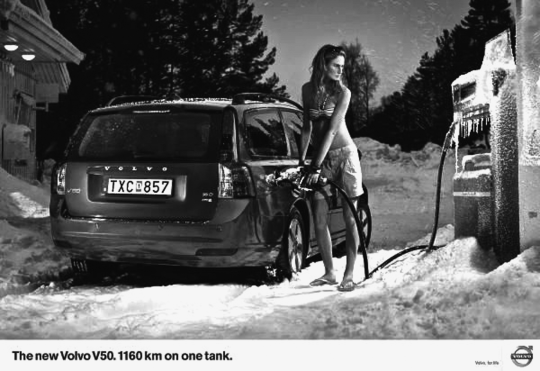
Figure 16.3 When you have one great image like this, telegraphing the benefit, you can sometimes just stretch it into a cool TV spot.
Think Simple
That same idea, of a person wearing swimwear while filling their Volvo at a winter-shrouded gas station, it also works marvelously on TV. In video, it begins with a man at a cold and snowy station filling his snowmobile. He watches as a Volvo pulls up, guy jumps out wearing surfer shorts, fills his tank, and drives away. The super says the same thing as the print's headline: “The new Volvo V50. 1160 km on one tank.” whipple5gas
The advice about staying simple applies to TV just as it does to print. If you've been assigned a cheapo TV spot, good. Because it's going to force you to pare down to the essence of the product benefit. So valuable is this kind of thinking, you should start here even if your client has a large budget. This intellectual challenge of working with a small budget (or any constraint) is one of the best mental reset buttons there is. It's such a fruitful place to begin, my friend Ernie Schenck wrote an entire book about it. Check out The Houdini Solution: Put Creativity and Innovation to Work by Thinking Inside the Box.
One last thing. These days, the Internet is very friendly to what they call “lo-fi” (as opposed to high-fidelity) production values. Viewers are used to shaky-cam clips filmed by backyard directors. Depending on the idea, lo-fi can add credibility or authenticity.
Don't worry too much about the production values. Concentrate on the idea.
Big spots are cool. They take forever to produce and you'll likely be out of town for months. But when they finally air? Oh, man. As of this writing, one of the most awarded “big” spots is one also created by Forsman & Bodenfors; and also for Volvo. Obviously, you need to see this actual spot but work this good merits description here (Figure 16.4).
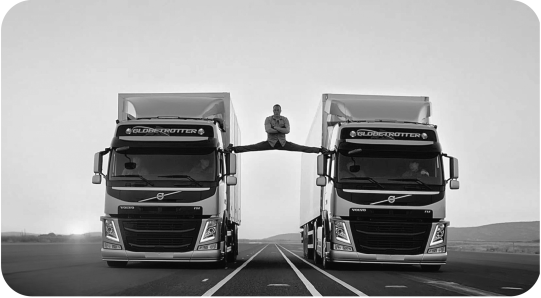
Figure 16.4 This extraordinary spot, also from Forsman & Bodenfors, made a lot of us in advertising grind our teeth in envy. (Well, I did anyway.) It's okay to think big, too.
The camera opens on a tight shot of martial arts movie star Jean-Claude Van Damme. It's quiet. The camera pulls back and we see he's precariously perched on the side mirrors of two moving Volvo trucks, one foot on one truck, one on the other. His arms are crossed. He's calm. He stares at the camera, we hear his voice.
VAN DAMME'S VO (as internal thoughts): I've had my ups and downs. My fair share of bumpy roads and heavy winds. That's what made me what I am today. Now I stand here before you. What you see is a body crafted to perfection. A pair of legs engineered to defy the laws of physics. And a mindset to master the most epic of splits.
The camera pulls wide, the ethereal track “Only Time” by Enya begins, and the two trucks slowly pull apart from each other. Van Damme maintains his balance on the trucks and ultimately ends up doing, as promised, the most epic of splits. The super comes up.
SUPER: This test was set up to demonstrate the stability and precision of Volvo Dynamic Steering.
There were no special effects, just one monstrously cool take. The commercial went on to win every single award on the planet and as of this writing, it's had over 80 million views on YouTube. whipple5epicsplit
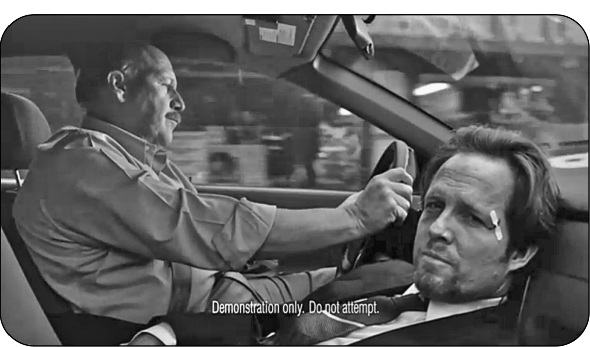
Figure 16.5 Actor Dean Winter represents mayhem personified; here he's an undependable GPS device.
Please be Careful Using Spokespeople
If you don't do it well, you may be creating another “Tony the Tiger” to torture subsequent generations of creatives. But when it's done well, it can be magnificent. Casting is everything.
Perhaps the best campaign I've seen in recent years featuring a spokesperson is actor Dean Winter portraying “Mayhem” for Allstate Insurance (see Figure 16.5). Leo Burnett, creative director, and creator Britt Nolan told me the original idea for Mr. Mayhem was based on Harvey Keitel's character, “Mr. Wolff,” in the movie Pulp Fiction: a strangely menacing-yet-charming man who protects you from things; in this case, the slings and arrows of everyday life. Once they created Mr. Mayhem's character, Leo Burnett used him to promote all kinds of Allstate products, in all kinds of media, even eBay—where Mayhem sold the stuff he stole from somebody's house. whipple5mayhem
Write Sparely
Don't carpet your spot with wall-to-wall copy. Leave breathing room. Lots of it. After you've written your script, get out a really big, scary knife. Like the one in Halloween 4.
You'll be glad you did come editing time. You'll find you need space to let those wonderful moments on film just happen by themselves, quietly, without a voice-over jabbering in your ear.
Author Sydney Smith suggested, “In composing, as a general rule, run your pen through every other word you have written; you have no idea what vigor it will give to your style.”
For 15-Second Spots, If You Must Write at All, Write Sparely
A 15-second TV spot is a different animal than a 30-second spot. You have no time for a slow build. With four to five seconds already set aside for the wrap-up and client logo, you're looking at around 10 very skinny seconds to unpack your show, put it on, and hit the showers.
So strip your 15-second TV spots down to the bones. And then strip again down to the marrow. Lock off the camera and keep it to one scene if you can. Even two cuts can make a :15 look choppy.
I remember a Toyota :15 that was this simple. The camera is locked down on an empty red Toyota parked on a quiet suburban street. Suddenly a barking dog comes rushing down the driveway of the house behind it and careens into the back of the car. Type comes up to silently explain: “Looks Fast.” A pause. Then: “The New Celica Action Package.”
Don't Show What You're Saying, or Say What You're Showing
This idea, discussed in print advertising, has a counterpart here in broadcast, with a few twists.
You have two tracks of information in a video occurring simultaneously: audio and visual. To some degree, they have to match up. If either track wanders too far afield of the other, viewers will not know which to attend to; they'll lose interest and begin feeling around in the couch for change. On the other hand, you don't want to have the voice-over and video so joined at the hip viewers hear again what they've already seen on screen.
It's better to have one track complete the other, or play off the other, just as you do in print. That 1 + 1 = 3 thing works to great effect here in television. The words and the visuals can supply slightly different pieces of information, tracks that viewers can integrate in their heads.
Sometimes you can add creative tension between what is seen and what is heard by giving the copy an unexpected tone, perhaps of irony or understatement. For instance, I remember a Reebok spot featuring a popular Dallas Cowboy running back crashing into defensive players. What you heard, though, was the player quietly musing about how football “allows you to meet so many people.”
If You Can Make the First Two Seconds of Your Spot Visually Unusual, Do So
Think about it. Your viewer's watching TV, eyes glued to the scene. An intruder creeps through the dark when suddenly the homeowner comes out of nowhere and gives him both barrels. The camera closes in. Oh, no! He shot his best friend. Duuude. Fade to black.
You now have two seconds to keep the viewer's eyes on the screen before he heads to the kitchen to eat chili out of a can over the sink. You want a strong opening.
The first frame of the Kayak commercial pictured in Figure 16.6 certainly got my attention. (Turns out it's a teacher pretending he's facing his students, when in fact he's facing the other direction, typing on a laptop in search of a low airfare.) whipple5kayak
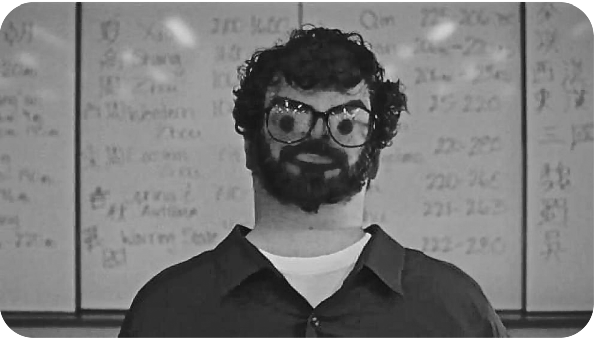
Figure 16.6 Open strong. You're competing against your viewer's urge to get a second bag of Cheetos or go to the bathroom—sometimes both, sadly.
When you open with something that's inherently interesting or dramatic, you create what George Loewenstein called a curiosity gap. He says we feel curiosity when there's a gap between what we know and what we want to know, and he describes curiosity as an itch. See what happens if you can start your spot with something that opens this gap, creates an itch, and watching the rest of the commercial is the only way to scratch it.
Solve the Last Five Seconds
There's an old Hollywood axiom that says, “Movies are all about their last 20 minutes.” Writer/creative director David Fowler reiterates that advice in The Creative Companion:
The most important part of any television advertisement is its conclusion, the last five seconds. That's the part that resolves, explains, summarizes, or excuses the preceding twenty-five seconds. If you're not clear about the last five seconds, you're not clear about anything, because that's where your premise gets pounded home. Try to write the last five seconds first. If you can't, you don't need to write a spot, you need to develop a premise for a spot.2
Another Hollywood axiom seems appropriate here: “Audiences will forgive almost anything in the first half of a movie and almost nothing in the second.”
A Good Video Should Entertain Throughout its Entire Length
Avoid a long buildup to an “unexpected” conclusion, or what I call a “waw-waw” ending. (You know that sound, the pair of muted trumpet notes.) Once we know a commercial's “unexpected ending,” how many times can we really enjoy watching it? I'm not against surprise in a TV spot, just those gimmicky little switcheroos at the end of a commercial. But when it's done well, there's real surprise, and the gasp you hear when you move a viewer's whole mind-set to a fresh way of seeing things—that can be pretty cool.
For my money, a great spot is a joy to watch from beginning to end, over and over. There's something new to look for in each frame. Take a break right now and check out two seminal spots for Australia's Carlton Draught beer. Every frame is interesting, right down to the last second and their tagline: “Made From Beer.” whipple5chase whipple5bigad
![]()
I hope these few pieces of advice will be enough to help frame your thinking as you begin working in this cool medium. Its high visibility and public forum make it one of the most exciting media we work in—and it isn't going anywhere. TV is just going to keep changing.
Video is probably a more accurate term to use now that commercials have been liberated from the 30- or 60-second restriction and no longer appear exclusively on one big screen in the living room. Online, a video can be as long or short as your idea needs it to be.
A lot has changed. What hasn't changed? Your idea must be interesting.
